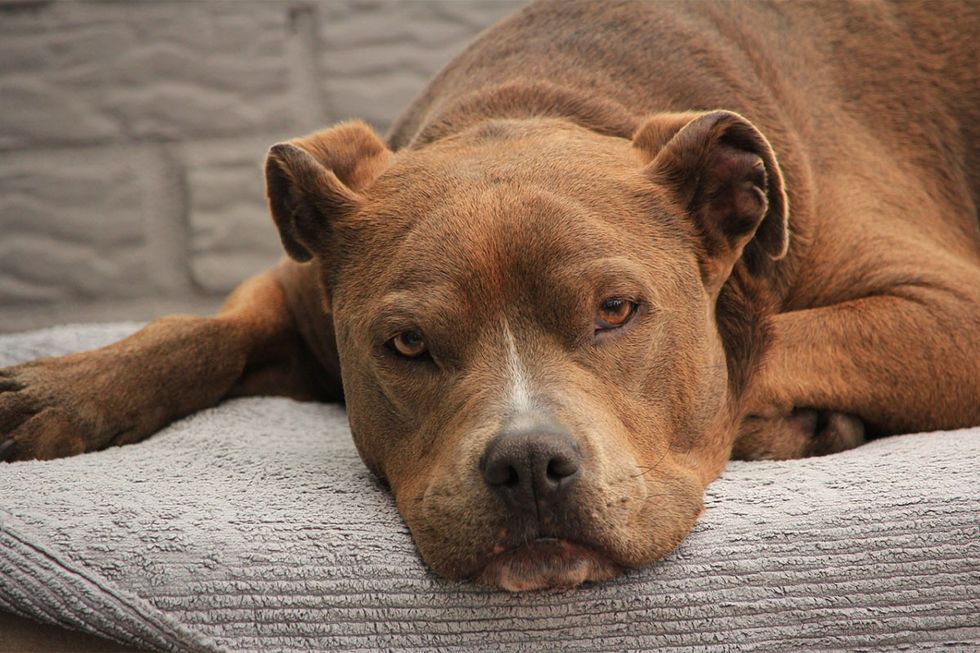With its yoga classes, vegetarian lunch options, and field trips to posh salons, Children of the Night seems like an all-inclusive resort. It's not. It's a shelter for teen prostitutes.
Sarah landed on the doorstep of Children of the Night less than 24 hours ago, and even though the other kids there barely know her, they're throwing her a birthday party. Birthday parties are a ritual at Children of the Night, and rituals are important to a young girl who has known nothing but uncertainty in her life. A dozen girls burst into the cafeteria bearing turquoise crepe tablecloths and festive plastic dinnerware. They prance around the room, taping clusters of balloons to the walls, reserving a few to stuff down their shirts.A big-boned girl with tattooed biceps is pacing the room restlessly. She seems bored, or disgusted, or a little of both. "I hate birthdays," she says, casting a withering glance at one of the other girls, who is standing on her tiptoes, taping a trio of balloons to a bulletin board where the week's vegetarian menu options are displayed. "Birthdays suck."Among the current batch of kids at the Children of the Night-and it does seem to shift slightly every week-Lily is the alpha dog. She is bigger and louder than the other girls, and tougher, too. She has tawny skin and spiky eyelashes and a blunt, upturned nose. A scar runs from her inner elbow down to her wrist. She doesn't like to talk about its origins.On her last birthday, Lily turned 17 while locked up in a juvenile prison in Las Vegas, Nevada. She had been working as a prostitute in Vegas when she got busted for soliciting on the Strip. She was thrown in jail for ten months. Jail was awful, a violent place where days were spent plotting your survival and nights were spent counting your regrets. But getting arrested: that was a good thing. Lily doesn't have any regrets about that.Getting sent to Children of the Night is one of the best things that could happen to a teenager coming off the streets. Girls who get arrested for prostitution make special requests to be sent there. Until about five years ago, COTN was the only shelter in the country dedicated to serving children coming out of prostitution. Most children who got arrested for prostitution were placed in group homes, which can be particularly hard on former prostitutes. "As soon as it becomes known in a group home that a girl was working on the streets, she becomes known as a bad girl, a ho," says Carol Smolenski, the executive director of ECPAT USA, which works to prevent trafficking and sexual exploitation of children. What makes COTN different, she says, is that its founder, Lois Lee."[Lee] was way ahead of her time in recognizing that these kids can't be mixed in with a bunch of other kids who don't understand what they've been through," Smolenski says. "They need psychological services to help them build up their self-esteem. They need to learn that they have value beyond their use as a prostitute."As the issue of child prostitution has come under scrutiny, even officials in the justice system and law enforcement have begun to understand the importance of attending to the particular needs of former prostitutes. "For years, kids who prostituted were perceived as criminals and they were treated that way," says Smolenski. "No one thought of them as victims, so they didn't see the impetus to create programs intended to help them."| Quote: |
| Lois Lee understands that you have to talk to these kids like adults; you can't be too soft, or they will bulldoze you. They won't respect you. |
 All of it stems from Lee herself, who is hardly a gentle, earnest social worker. She is a fast-talking, no-nonsense, Type-A blonde, with an uncanny knack for procuring money and attention for her efforts. Judging from her impressive $2 million annual operating budget, Lee is a formidable fundraiser. One of her biggest supporters was Johnny Carson, who donated more than a million dollars and left COTN a sizable annual gift from his foundation after his death.Lee, who is 57, founded Children of the Night in 1979, when she was 29 years old. Even though she's been running the shelter for almost 30 years, she's still deeply involved in the day-to-day. She's on-site four days a week, making sure things are done right, the way she wants them done. Monday through Thursday, she is there, eating lunch with the kids, listening to their gripes about staff members, helping them map out plans for their future.When I met Lee, I asked her what role she plays for the kids."I'm their mom," she said.Anything else?"Their dad."Lee may be in the business of raising kids, but her persona is more probation officer than sympathetic parent. She is bracingly unsentimental, and she doesn't have much patience for those who aren't. "Ooey-gooey," she calls them. She jokes with the girls, she listens to their problems, she offers advice and encouragement-but her style is direct and matter-of-fact."Lois isn't like other social-service types," says Keith Haight, a detective in the LAPD's vice division who has worked with Lee for decades. "She understands that you have to talk to these kids like adults; you can't be too soft, or they will bulldoze you. They won't respect you."Lee is clearly motivated by compassion and concern for the kids she works with, but she also seems to be motivated by anger. She's on a crusade to help these kids, but she's also on a crusade to stick it to the people who make a living off of them, and that crusade seems to have a personal edge to it. It emerges in conversation with her, as well as in the language in COTN's publicity materials: The word "pimp" seldom appears without the modifier "vile" or "vicious," or sometimes both.Years ago, Lee enrolled in law school so that she could pursue legal avenues to further help child prostitutes. She earned her diploma and passed the bar, but decided to continue her work with Children of the Night. Today, she is frequently called to trials as an expert witness. She also encourages the kids at Children of the Night to testify against their pimps, and accompanies them to court when they do.As a law-enforcement official, Haight admires Lee for her dedication to helping the police put pimps in jail-but he admits that that facet of her work has earned her some detractors. People in social services generally believe that their priority is helping to heal victims, and that putting a girl into court with the man who terrorized her could be harmful. But Haight believes that Lee's emphasis on prosecution is an integral component of helping young prostitutes. "Lois sees the big picture," he says. "She understands that if you don't focus on putting the perpetrator behind bars, he is still out there, roaming around. All that does is create more victims."
All of it stems from Lee herself, who is hardly a gentle, earnest social worker. She is a fast-talking, no-nonsense, Type-A blonde, with an uncanny knack for procuring money and attention for her efforts. Judging from her impressive $2 million annual operating budget, Lee is a formidable fundraiser. One of her biggest supporters was Johnny Carson, who donated more than a million dollars and left COTN a sizable annual gift from his foundation after his death.Lee, who is 57, founded Children of the Night in 1979, when she was 29 years old. Even though she's been running the shelter for almost 30 years, she's still deeply involved in the day-to-day. She's on-site four days a week, making sure things are done right, the way she wants them done. Monday through Thursday, she is there, eating lunch with the kids, listening to their gripes about staff members, helping them map out plans for their future.When I met Lee, I asked her what role she plays for the kids."I'm their mom," she said.Anything else?"Their dad."Lee may be in the business of raising kids, but her persona is more probation officer than sympathetic parent. She is bracingly unsentimental, and she doesn't have much patience for those who aren't. "Ooey-gooey," she calls them. She jokes with the girls, she listens to their problems, she offers advice and encouragement-but her style is direct and matter-of-fact."Lois isn't like other social-service types," says Keith Haight, a detective in the LAPD's vice division who has worked with Lee for decades. "She understands that you have to talk to these kids like adults; you can't be too soft, or they will bulldoze you. They won't respect you."Lee is clearly motivated by compassion and concern for the kids she works with, but she also seems to be motivated by anger. She's on a crusade to help these kids, but she's also on a crusade to stick it to the people who make a living off of them, and that crusade seems to have a personal edge to it. It emerges in conversation with her, as well as in the language in COTN's publicity materials: The word "pimp" seldom appears without the modifier "vile" or "vicious," or sometimes both.Years ago, Lee enrolled in law school so that she could pursue legal avenues to further help child prostitutes. She earned her diploma and passed the bar, but decided to continue her work with Children of the Night. Today, she is frequently called to trials as an expert witness. She also encourages the kids at Children of the Night to testify against their pimps, and accompanies them to court when they do.As a law-enforcement official, Haight admires Lee for her dedication to helping the police put pimps in jail-but he admits that that facet of her work has earned her some detractors. People in social services generally believe that their priority is helping to heal victims, and that putting a girl into court with the man who terrorized her could be harmful. But Haight believes that Lee's emphasis on prosecution is an integral component of helping young prostitutes. "Lois sees the big picture," he says. "She understands that if you don't focus on putting the perpetrator behind bars, he is still out there, roaming around. All that does is create more victims." Lee first became involved in the issue of prostitution while she was pursing her doctorate in sociology at the University of California, Los Angeles. One of her professors invited her to a San Francisco conference of the American Sociological Association and pointed out a meeting of the National Hookers' Union. There, she met Margot St. James, a former sex worker and a leader in the campaign for legalizing prostitution. James told her about a recent lawsuit won by the American Civil Liberties Union against Alameda County for prosecuting prostitutes and letting customers go free. A light bulb went on in Lee's head. She returned to Los Angeles, where she filed a lawsuit against the LAPD for the same thing. And won. She was 27.From that point on, advocating for prostitutes and against pimps became Lee's lifework. She began spending time on the streets, interviewing prostitutes and madams for her dissertation. As Lee was wrapping up her research, she met hundreds of teenagers working as prostitutes on the streets of Hollywood. Congress had recently passed a law preventing the police from arresting children for status offenses-running away, truancy, and curfew violations. Children who had formerly been locked up in detention centers were instead living on the streets, with no one to provide for them. If they turned to prostitution, as many did, they were no longer eligible to live in a foster home. "They were falling between the cracks," says Lee. "There were no social services available to them."For a while, Lee began taking them home with her, letting them sleep on her couch or her floor, keeping them hydrated while they detoxicated from heroin. The girls marveled at the fact that Lee trusted them not to rob her blind, and they didn't. Over the next three years, more than 250 of them stayed at her apartment.Around the same time, Lee started Children of the Night as the first drop-in center for teen prostitutes in Hollywood. She was able to feed them and clothe them-but she knew it wasn't enough. One night she got a call from a young male prostitute whom she'd picked up at the bus station and put in a homeless shelter. He'd fled the shelter and wound up spending the night in a condemned building, where four men raped him. "He called me crying and terrified, and I couldn't go get him, because I was out of gas," she says. "That's when I knew I had to raise enough money to set up a halfway house."Today, Children of the Night is housed in a converted post office painted the orangey-pink color of children's aspirin. It's located in an industrial neighborhood of Van Nuys, across from an evangelical church with a marquee that calls out to the lost and the wretched. Lee bought the building in 1989, with $899,000 in cash; $1 million was put into renovation.Inside, it's hardly fancy, but it's warmer and less institutional than your typical safe house: The walls are painted apricot and teal blue, the ceilings are high, there are straw baskets full of sanitary napkins in the bathrooms, and the rec room has comfortable overstuffed couches, which are invariably graced by napping girls. Lee takes me on a quick tour of the rooms. Their doors are decorated with collages of platitudes like "Never give up!" and "What would you attempt if you were not afraid to fail?"Once a week, Lee holds a staff meeting in the cafeteria. Everyone, even the girls, attends the staff meetings, inviting an element of chaos into the process. "I want them to have a sense of ownership over what happens at the shelter," she says. She stands before them, dressed not much differently than the kids themselves in a knit crimson top and fitted jeans. A set of keys dangles from her neck.Lee never misses her lunches with the girls Monday through Thursday, and she plays softball with them every Sunday. She also puts them to bed at night-not literally, but she calls in to make sure all is well, and checks on them via the closed-circuit television in her home. Often when she calls, one of the girls will ask to talk to her, and then another and another, and a three-minute check-in will turn into a 75-minute rap session.
Lee first became involved in the issue of prostitution while she was pursing her doctorate in sociology at the University of California, Los Angeles. One of her professors invited her to a San Francisco conference of the American Sociological Association and pointed out a meeting of the National Hookers' Union. There, she met Margot St. James, a former sex worker and a leader in the campaign for legalizing prostitution. James told her about a recent lawsuit won by the American Civil Liberties Union against Alameda County for prosecuting prostitutes and letting customers go free. A light bulb went on in Lee's head. She returned to Los Angeles, where she filed a lawsuit against the LAPD for the same thing. And won. She was 27.From that point on, advocating for prostitutes and against pimps became Lee's lifework. She began spending time on the streets, interviewing prostitutes and madams for her dissertation. As Lee was wrapping up her research, she met hundreds of teenagers working as prostitutes on the streets of Hollywood. Congress had recently passed a law preventing the police from arresting children for status offenses-running away, truancy, and curfew violations. Children who had formerly been locked up in detention centers were instead living on the streets, with no one to provide for them. If they turned to prostitution, as many did, they were no longer eligible to live in a foster home. "They were falling between the cracks," says Lee. "There were no social services available to them."For a while, Lee began taking them home with her, letting them sleep on her couch or her floor, keeping them hydrated while they detoxicated from heroin. The girls marveled at the fact that Lee trusted them not to rob her blind, and they didn't. Over the next three years, more than 250 of them stayed at her apartment.Around the same time, Lee started Children of the Night as the first drop-in center for teen prostitutes in Hollywood. She was able to feed them and clothe them-but she knew it wasn't enough. One night she got a call from a young male prostitute whom she'd picked up at the bus station and put in a homeless shelter. He'd fled the shelter and wound up spending the night in a condemned building, where four men raped him. "He called me crying and terrified, and I couldn't go get him, because I was out of gas," she says. "That's when I knew I had to raise enough money to set up a halfway house."Today, Children of the Night is housed in a converted post office painted the orangey-pink color of children's aspirin. It's located in an industrial neighborhood of Van Nuys, across from an evangelical church with a marquee that calls out to the lost and the wretched. Lee bought the building in 1989, with $899,000 in cash; $1 million was put into renovation.Inside, it's hardly fancy, but it's warmer and less institutional than your typical safe house: The walls are painted apricot and teal blue, the ceilings are high, there are straw baskets full of sanitary napkins in the bathrooms, and the rec room has comfortable overstuffed couches, which are invariably graced by napping girls. Lee takes me on a quick tour of the rooms. Their doors are decorated with collages of platitudes like "Never give up!" and "What would you attempt if you were not afraid to fail?"Once a week, Lee holds a staff meeting in the cafeteria. Everyone, even the girls, attends the staff meetings, inviting an element of chaos into the process. "I want them to have a sense of ownership over what happens at the shelter," she says. She stands before them, dressed not much differently than the kids themselves in a knit crimson top and fitted jeans. A set of keys dangles from her neck.Lee never misses her lunches with the girls Monday through Thursday, and she plays softball with them every Sunday. She also puts them to bed at night-not literally, but she calls in to make sure all is well, and checks on them via the closed-circuit television in her home. Often when she calls, one of the girls will ask to talk to her, and then another and another, and a three-minute check-in will turn into a 75-minute rap session. On one afternoon, sitting around the cafeteria, Lee asks them what they anticipated before meeting her. The girls giggle. "We heard that you were mean." "That you were a bitch." "Everyone said, ‘Whatever you do, don't get on her bad side!'" Lee seems unfazed by the report. She isn't a people pleaser. And besides, radiating loving-kindness isn't her style. She's a pragmatist.More than 4,000 kids have been through Children of the Night in its 28-year history, and Lee is still in touch with almost half of them. Not daily or weekly or monthly, but intermittently. They call when they are arguing with their husbands over whether to have a second child. They call when they have a nervous breakdown and fear losing their jobs. That's part of the package at COTN: the assurance that after you leave, you can always call and ask for help.Some have gone on to become doctors and lawyers and therapists. Others have gone back to prostitution and wound up dead. The stories of what happens to them when they leave vary dramatically. COTN is the best chance most of these kids have at turning their lives around. And yet, statistically, many of them will not. In 2004, the last year for which we obtained data, nearly 30 percent of them returned to the streets. When Lee first started the shelter, she took it hard when the girls went astray. She wanted to rescue them all, and she believed that she could. Now she sees things differently."A girl might walk out of here in the middle of the night and go back to the streets," she says. "She might not ever come back again. But will she call me from the hospital if she is dying with AIDS? Yes. And I will go to her and sit by her bed and hold her hand."Lily may have gotten to COTN only recently, but her history with prostitution goes back years. When she was 11, Lily fled the foster home where she and her younger sister had been living to return to her mother, who was addicted to heroin. Unable to work, and desperate for drug money, she sent Lily out onto the streets of Baltimore, telling her that she needed money to get well. She instructed Lily to approach older men and ask them if they'd like her to do something nice for them for $20.Eventually, when a male friend moved to Las Vegas to open up an escort service, Lily joined him. "I was really scared," she says. But within a few months, Lily's younger sister had moved out west as well. Lily tried to support her sister, but her sister wanted to earn her own money. Soon after she arrived, she too was turning tricks. Whenever she would leave to see a client, Lily would fret until she returned.
On one afternoon, sitting around the cafeteria, Lee asks them what they anticipated before meeting her. The girls giggle. "We heard that you were mean." "That you were a bitch." "Everyone said, ‘Whatever you do, don't get on her bad side!'" Lee seems unfazed by the report. She isn't a people pleaser. And besides, radiating loving-kindness isn't her style. She's a pragmatist.More than 4,000 kids have been through Children of the Night in its 28-year history, and Lee is still in touch with almost half of them. Not daily or weekly or monthly, but intermittently. They call when they are arguing with their husbands over whether to have a second child. They call when they have a nervous breakdown and fear losing their jobs. That's part of the package at COTN: the assurance that after you leave, you can always call and ask for help.Some have gone on to become doctors and lawyers and therapists. Others have gone back to prostitution and wound up dead. The stories of what happens to them when they leave vary dramatically. COTN is the best chance most of these kids have at turning their lives around. And yet, statistically, many of them will not. In 2004, the last year for which we obtained data, nearly 30 percent of them returned to the streets. When Lee first started the shelter, she took it hard when the girls went astray. She wanted to rescue them all, and she believed that she could. Now she sees things differently."A girl might walk out of here in the middle of the night and go back to the streets," she says. "She might not ever come back again. But will she call me from the hospital if she is dying with AIDS? Yes. And I will go to her and sit by her bed and hold her hand."Lily may have gotten to COTN only recently, but her history with prostitution goes back years. When she was 11, Lily fled the foster home where she and her younger sister had been living to return to her mother, who was addicted to heroin. Unable to work, and desperate for drug money, she sent Lily out onto the streets of Baltimore, telling her that she needed money to get well. She instructed Lily to approach older men and ask them if they'd like her to do something nice for them for $20.Eventually, when a male friend moved to Las Vegas to open up an escort service, Lily joined him. "I was really scared," she says. But within a few months, Lily's younger sister had moved out west as well. Lily tried to support her sister, but her sister wanted to earn her own money. Soon after she arrived, she too was turning tricks. Whenever she would leave to see a client, Lily would fret until she returned.| Quote: |
| A girl might walk out of here in the middle of the night and go back to the streets. But will she call me from the hospital if she is dying with AIDS? Yes. And I will go to her and sit by her bed and hold her hand. |
















 Otis knew before they did.
Otis knew before they did.